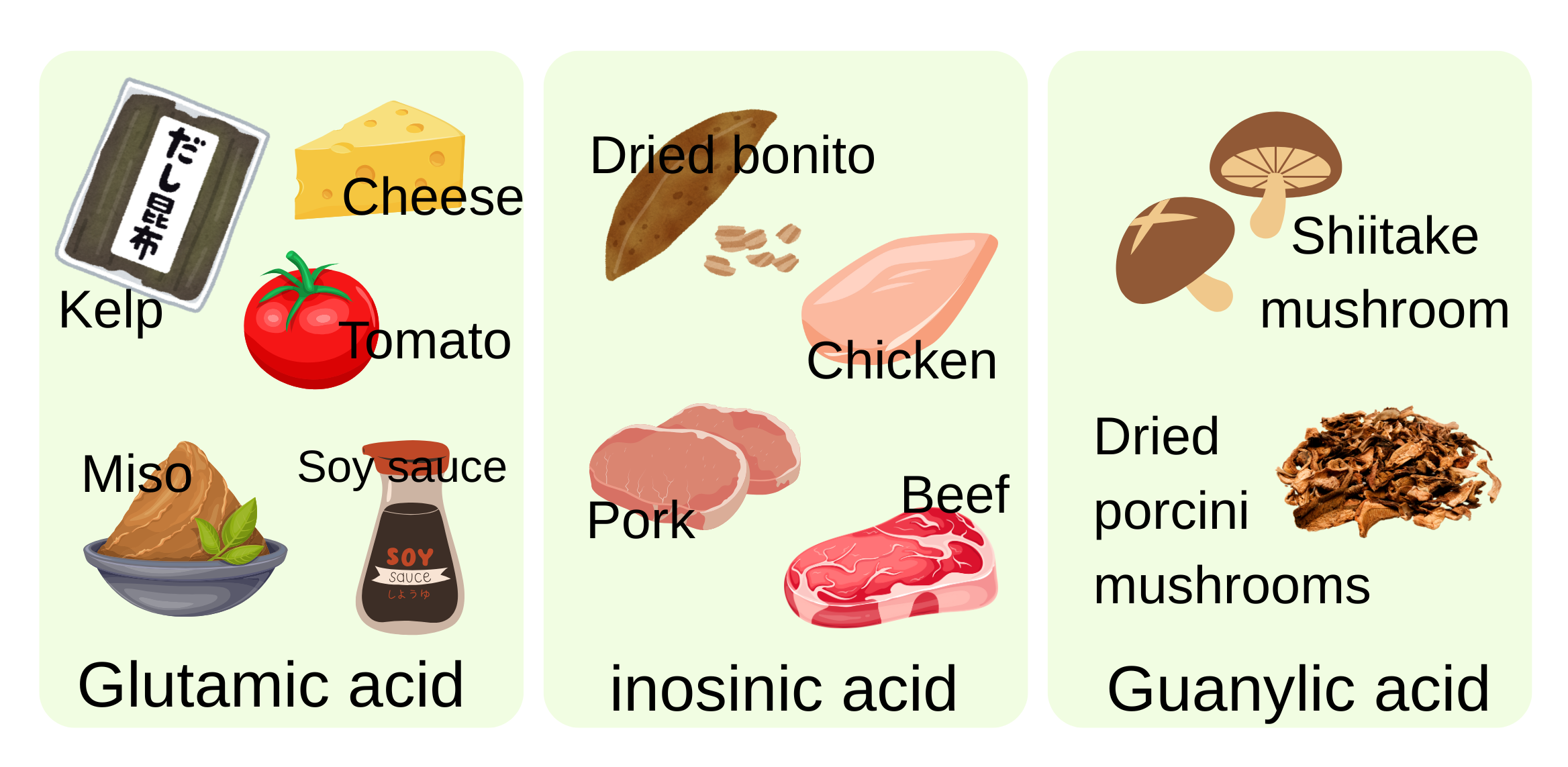Umami is more than just a trendy buzzword among chefs—it’s a centuries-old taste concept rooted in Japanese cuisine and now embraced around the world. If you’ve ever tasted a bowl of miso soup or savored the richness of aged Parmesan, you’ve already experienced umami. But what exactly is it? In this article, we’ll explore the definition of umami, its origins, taste profile, and how it connects to Japanese fermented foods. Whether you’re a professional chef or simply passionate about food, understanding umami can elevate your cooking to new heights.
What Is Umami ? Definition and Meaning
You may have heard umami described as the “fifth taste,” but what does that really mean? Umami (written as うまみ in Japanese) literally translates to “delicious taste.” It was identified in 1908 by Japanese chemist Dr. Kikunae Ikeda, who isolated glutamate as the key component responsible for the rich, savory flavor found in foods like seaweed broth (kombu dashi).
Scientifically, umami is recognized as a distinct taste, alongside sweet, salty, sour, and bitter. It’s characterized by a deep, lingering savoriness that enhances the overall flavor profile of a dish. Today, umami is widely accepted by the global culinary and scientific communities as an essential taste.
▼If you want to learn more about kelp, click below.
The History of Umami and Its Role in Asian Cuisine
The story of umami begins in Japan but quickly spreads throughout Asia. Dr. Ikeda’s discovery led to the creation of monosodium glutamate (MSG), a seasoning that highlights umami flavor. Traditional Japanese cuisine has long relied on umami-rich ingredients like fermented miso, soy sauce, and katsuobushi (dried bonito flakes).
In broader Asian cuisine, umami is just as important. Korean dishes such as kimchi, and Chinese staples like fermented black beans and oyster sauce, are brimming with umami flavor.
What Does Umami Taste Like?
Umami has a distinct flavor profile that sets it apart. It’s often described as savory, meaty, or brothy, and has a mouth-filling, lingering sensation. Unlike the sharpness of sour or the sweetness of sugar, umami creates a rounded, deep taste that lingers on the tongue.
When tasting something with strong umami—like shiitake mushrooms or aged cheese—you might notice a full-bodied, almost addictive quality. It’s this taste that makes certain dishes comforting, satisfying, and crave-worthy. Combining umami with other basic tastes creates a rich and balanced flavor experience.
Foods Rich in Umami : Natural and Fermented Sources
Many foods naturally contain umami, especially those that are aged, cured, or fermented. These include:
- Mushrooms (especially shiitake): Strong taste of Guanylic acid
- Tomatoes: Glutamic acid and Guanylic acid
- Parmesan and aged cheeses: Contain high levels of Guanylic acid
- Seaweed(especially Kombu): First discovered Glutamic acid
- Soy sauce, miso, and other fermented products: The main taste is Glutamic acid
Umami-rich foods often combine different compounds—like glutamate, inosinate, and guanylate—that create an enhanced taste through synergistic effects.
Japanese Fermented Foods and Their Umami Power
Fermented Japanese ingredients are some of the richest sources of umami. Miso, made from fermented soybeans, is a staple in many traditional dishes. Soy sauce, another fermented product, is essential in both cooking and seasoning.
Other examples include mirin (sweet rice wine), rice vinegar, and natto (fermented soybeans). These ingredients not only contribute umami but also bring complexity, aroma, and cultural authenticity. Japanese cuisine leverages fermentation as a natural way to bring out deep, satisfying flavors.In Japanese cooking schools, fermentation is often taught as a foundational technique—one that connects deeply with the umami profile.
納豆記事挿入
Why Is Umami Important in Cooking?

Umami doesn’t just make food taste better—it creates harmony among flavors. It has the unique ability to enhance other taste elements without overpowering them. Adding umami to a dish often means you can use less salt while still maintaining a rich flavor.
For chefs and culinary creators, understanding umami is essential. It allows for more nuanced flavor design and better control over the final taste. Home cooks can also benefit by using umami-rich ingredients to turn simple meals into gourmet experiences.
How to Use Umami to Elevate Everyday Cooking
You don’t need a professional kitchen to make the most of umami. With a few simple techniques, anyone can add depth and satisfaction to their meals:
- Combine umami ingredients: Pair miso with mushrooms or soy sauce with tomatoes to amplify flavor
- Use fermented condiments: Add a spoonful of miso to soup or use soy sauce as a seasoning base
- Go slow and low: Long cooking processes, like simmering broths, release and deepen umami taste
Rather than following a detailed recipe, think of umami as a flexible tool—something that can be layered naturally in your daily meals.
Want to Learn More? Sign Up for Our Fermentation Newsletter
Curious to explore more about umami, Japanese fermented foods, and how you can use them in your own kitchen? Join our exclusive email newsletter to receive:
- Expert knowledge on Japanese fermentations
- Ingredient spotlights and cultural insights
- Early access to workshops and learning opportunities
👉 Sign up below and start your umami journey today
” 耀 Hikari ” – gastronomy
Experience Umami in Japan: Culinary Travel Opportunities
If you’re planning a trip to Japan or dreaming of one, why not go deeper? We offer hands-on fermentation classes and culinary study programs where you can:
- Learn how to make miso, soy sauce, and other umami-packed ingredients
- Tips for Japanese cuisine that makes the most of the ingredients
- Take home skills that will transform your cooking
👉 Explore our fermentation culinary experiences in Japan and reserve your spot
Understanding umami isn’t just about taste—it’s about culture, technique, and history. Whether you’re a chef, food creator, or passionate home cook, embracing umami will open new doors in your culinary journey. Start today by exploring fermented Japanese foods, experimenting with umami-rich ingredients, and signing up for our newsletter.
Umami isn’t just a flavor—it’s an experience. And your journey has just begun.

No responses yet